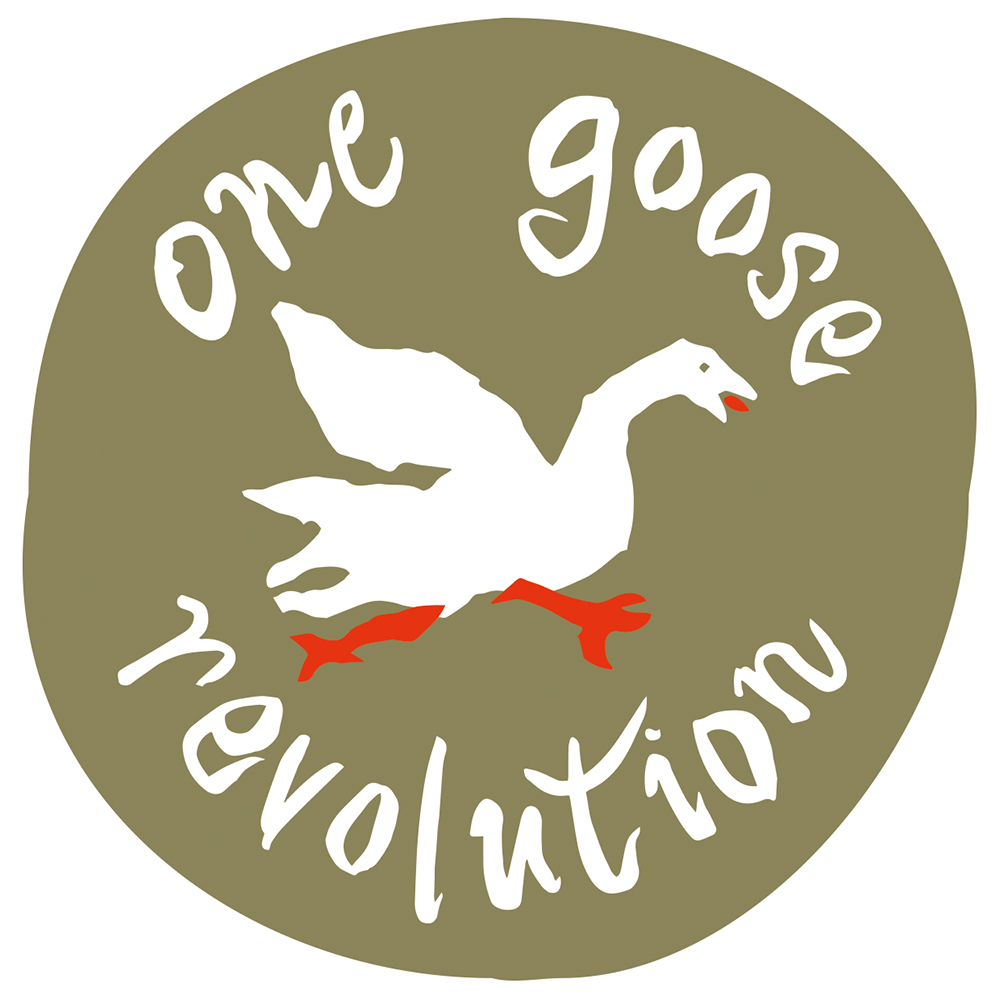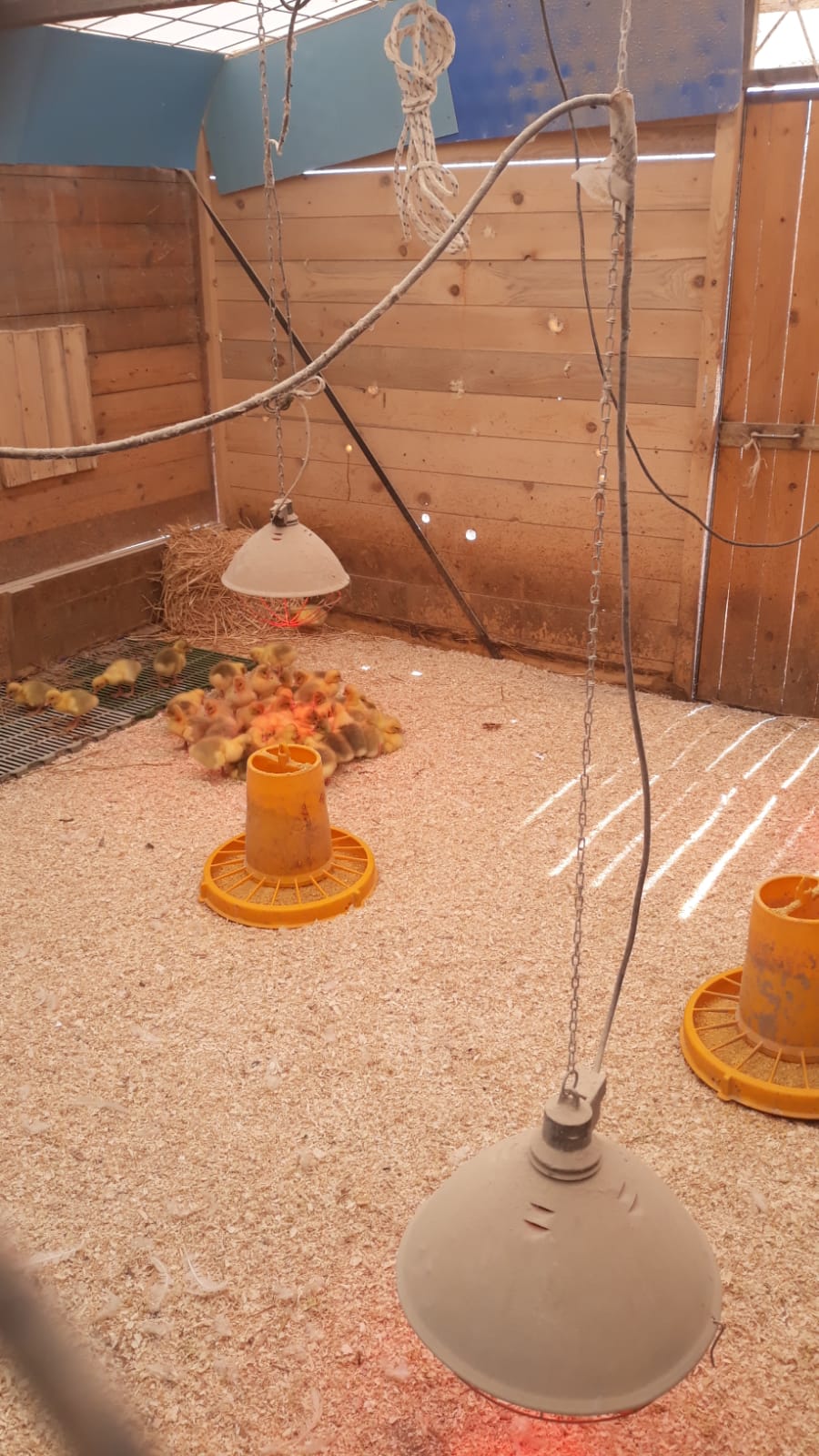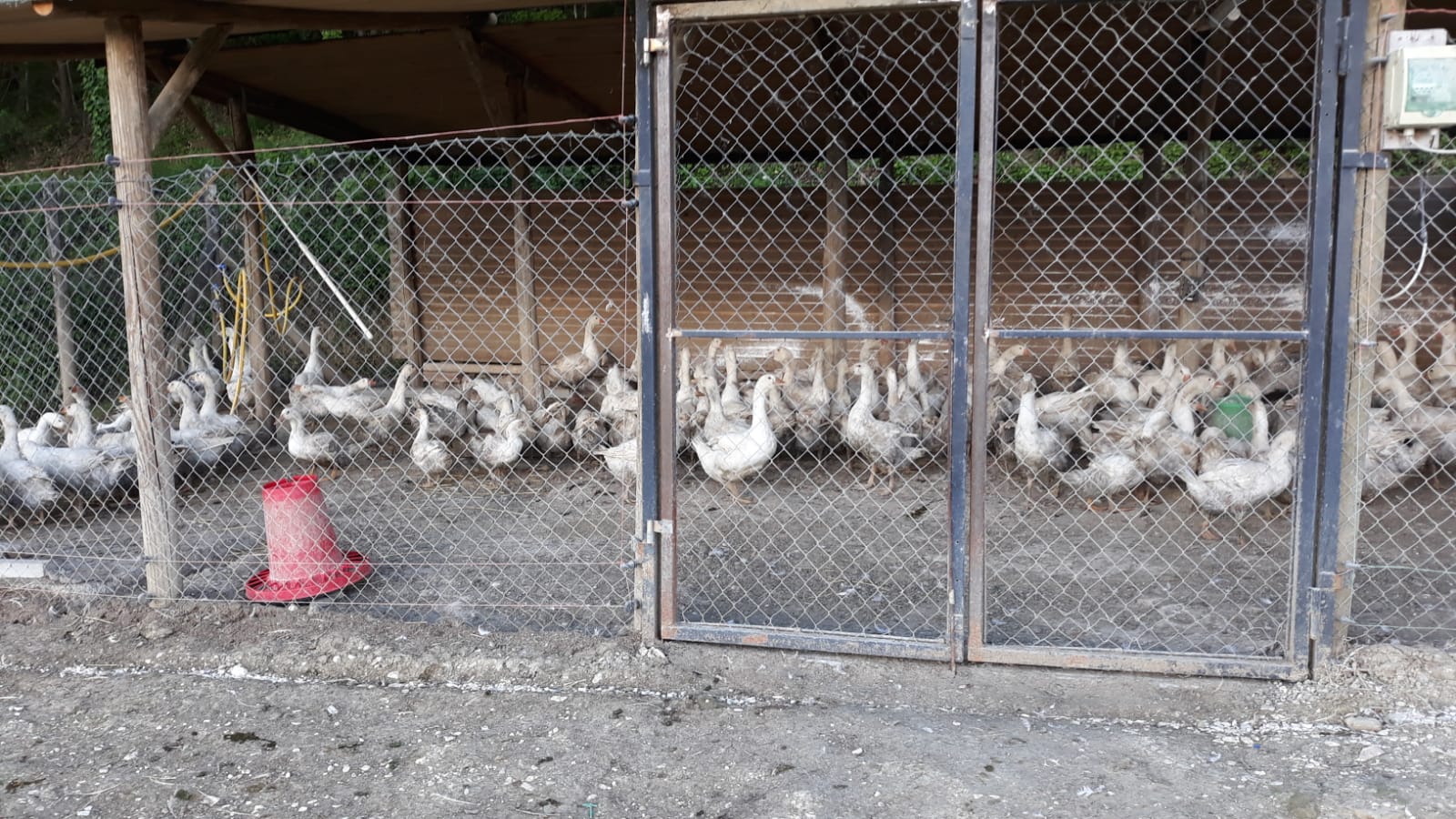In 2009 we had the idea of keeping the vineyard under control andcleaning it with the exclusive use of animals. Initially this was a small plot of a few rows of vines, but later we extended to an experimental vineyard of 4 hectares.
The workers who clean the vineyard are geese. Approximately 80 to 100 geese are needed per hectare of vineyard. The geese run free and feed on grass that grows spontaneously between the rows. At the moment, we rear 400 geese in a total of 4 hectares.
Our little helpers arrive at the farm when they are three days old (as per organic regulations) and are often reproduced directly on the farm. Afterwards they stay in our nursery for about 30-50 days.
However the period varies greatly depending on the season in which the breeding cycle begins.
Afterwards, they are fed with strictly organic first-phase feed and set in our small experimental vineyard in the open air. Then, at about 1-2 months of age, they are moved to our vineyards where a new shelter awaits them and where they will be protected from any adverse weather and from wild animals.
Every day at crack of dawn the doors to our vineyards are opened on a timer and the geese are able to feed on all the wild herbs and grasses they find. One hectare of vineyard can accommodate about 100 geese,
although the number depends on the season and period. During the budding and grape ripening phases, it is actually better to keep them out of the vineyard altogether. In the evening one of our operators ensures that the geese return to their shelter and gives them a small food supplement of a mix of organic grains.
This is how our geese are bred, free to graze in the vineyards and in safety. Their eating grass lightens the work of cutting by mechanical means and in addition enriches the soil with manure. The name of the project is “One Goose Revolution” in tribute to the Japanese botanist, philosopher and farmer Masanobu Fukuoka whose book “The one straw revolution” was a milestone for organic farming.
Our geese have also become part of a project called “Rural Chicken”, created by Professor Cesare Castellini, in collaboration with the Departments of Agriculture and Veterinary Science at the University of Perugia.
We all discovered that the meat of geese raised in this way, in addition to being of a higher quality, is also healthier: the diet of herbs and grasses, rather than feed, and the exercize they enjoy in the wild both help improve, in particular, the high content of omega 3 and omega 6 fatty acids.

Insights
Geese Reared in Vineyard: Soil, Grass and Animals Interaction



 Italiano
Italiano

